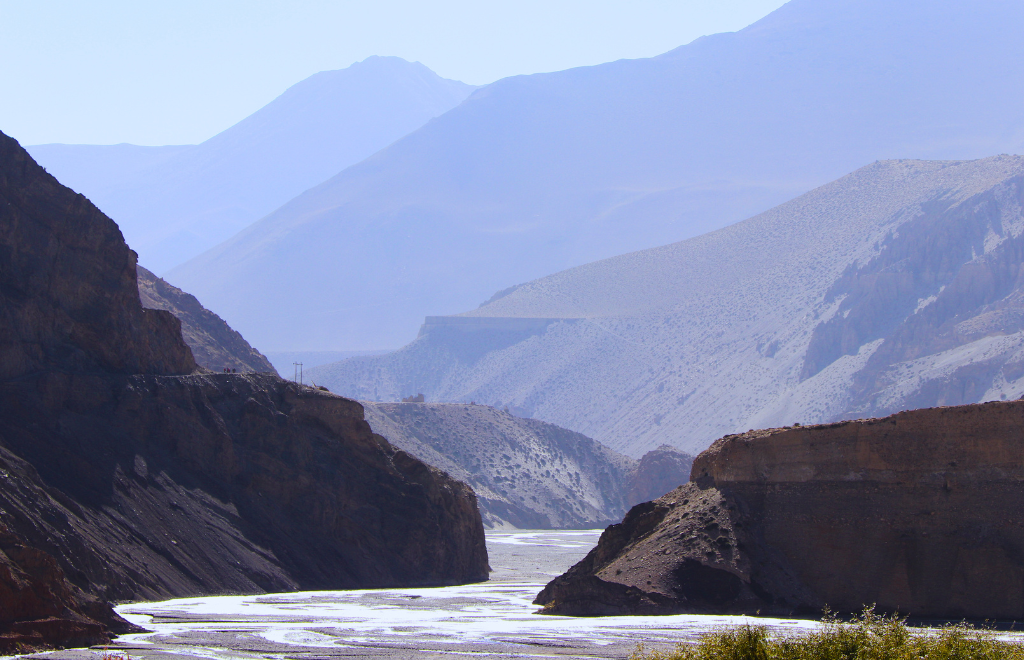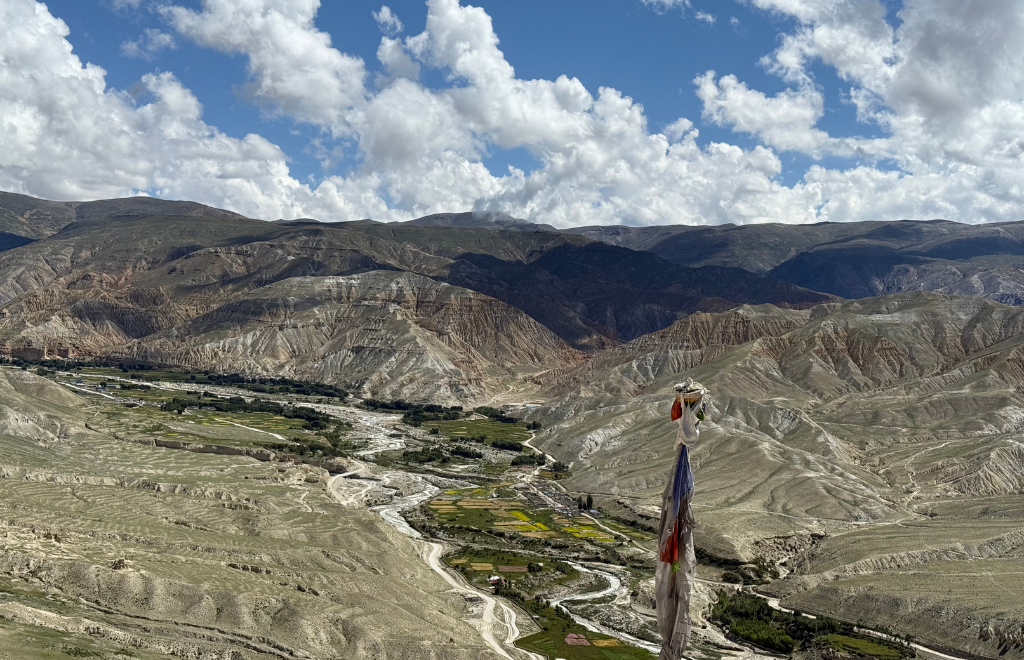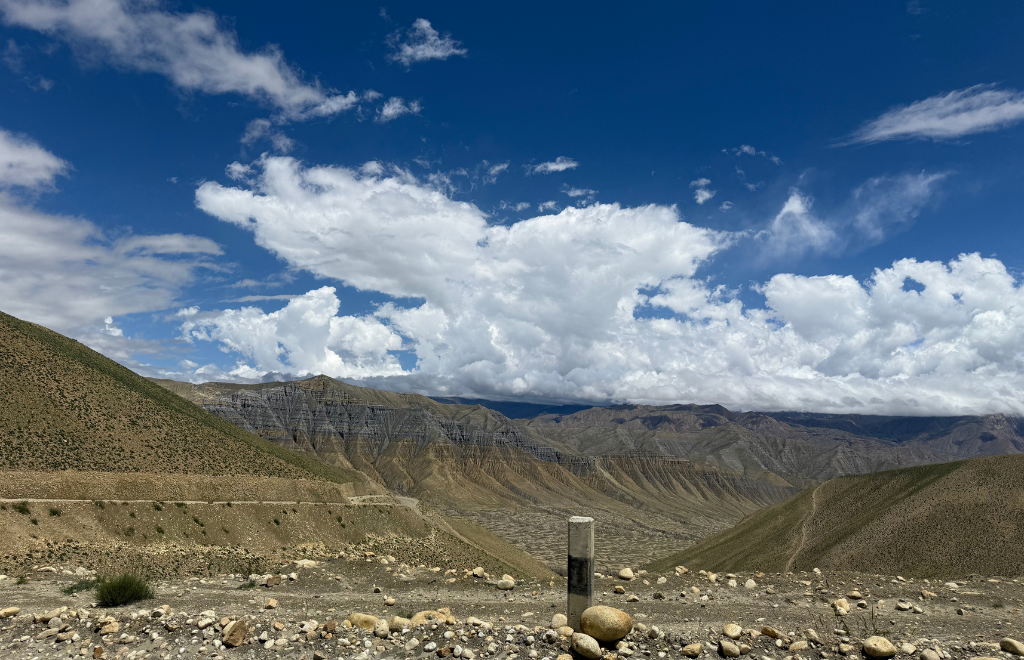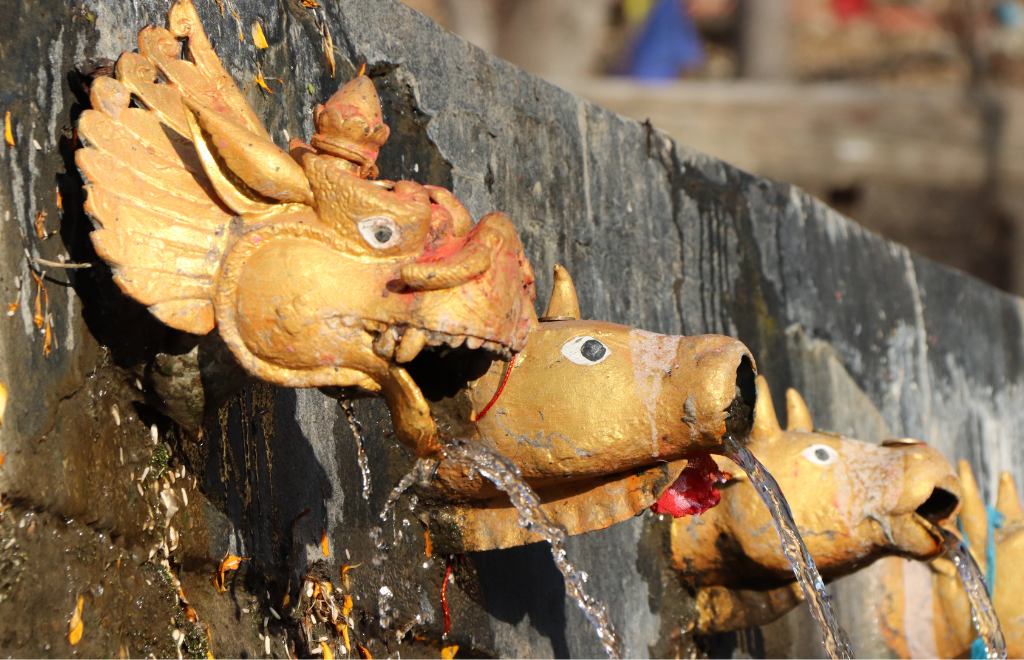Mustang Muktinath Temple: A Sacred Journey Through Upper Mustang
The History and Religious Significance of Muktinath
Muktinath Temple, located at an altitude of 3,800 meters in the Mustang district, is revered as one of the holiest shrines in Nepal.
- For Hindus, it is considered a Mukti Kshetra (place of liberation), where devotees believe visiting can cleanse one’s sins and help attain salvation. The 108 water spouts and the sacred flame that burns eternally symbolize purity and divinity.
- For Buddhists, the temple is equally sacred, associated with Padmasambhava (Guru Rinpoche), who spread Tibetan Buddhism. The natural flame at the temple is a representation of the harmony between the five elements.
The spiritual aura of Muktinath attracts pilgrims from Nepal, India, Tibet, and across the globe.
Where is Muktinath Temple?
Muktinath is located in the Mustang district of Nepal, on the famous Annapurna Circuit trekking route, just below the Thorong-La Pass. The temple lies in the Annapurna Conservation Area, surrounded by dramatic landscapes of barren cliffs, snow mountains, and deep valleys.
Its location also makes it a gateway to explore Upper Mustang, a region once known as the “Forbidden Kingdom of Lo.”

Upper Mustang – The Forbidden Kingdom
While Muktinath offers spiritual peace, Upper Mustang provides a unique cultural and adventurous experience. Once restricted to outsiders, this ancient Himalayan kingdom still preserves its Tibetan Buddhist traditions, centuries-old monasteries, and cave dwellings carved into cliffs.
Key highlights of Upper Mustang include:
- Lo Manthang – The walled capital with royal palaces and monasteries.
- Tiji Festival – A vibrant annual festival showcasing Tibetan-Buddhist rituals.
- Desert-like landscapes – Stark cliffs, barren hills, and views of Annapurna and Dhaulagiri.
- Ancient cave dwellings – Archaeological wonders that tell stories of Mustang’s history.
The contrast of sacred Muktinath and the mystical Upper Mustang makes the journey unique — one rooted in both faith and exploration.
Best Time to Visit Muktinath Temple
The weather in Mustang can be extreme, so timing matters:
- Spring (March–May): Best season with clear skies, blooming rhododendrons, and comfortable trekking conditions.
- Autumn (September–November): Another ideal period with mild weather and crystal-clear mountain views.
- Monsoon (June–August): Surprisingly, Mustang is a rain-shadow area, so you can still visit — plus, this is when the Tiji Festival in Lo Manthang takes place.
- Winter (December–February): Beautiful but harsh, with freezing temperatures and occasional snowfall. Recommended only for experienced travelers.
How to Reach Mustang Muktinath Temple
There are several ways to travel to Muktinath, depending on your time and preference:
- By Flight + Jeep: Fly from Pokhara to Jomsom, then drive to Muktinath.
- By Road: Take a jeep or bus from Pokhara/Kathmandu to Jomsom, then continue to Muktinath.
- By Helicopter: The fastest and most scenic way for those short on time.
- By Trekking: Follow the Annapurna Circuit Trek or the Jomsom–Muktinath Trek, a popular route for adventurers.

How to Combine Muktinath Temple with Upper Mustang
Travelers often combine Muktinath Temple with an Upper Mustang trek or jeep tour. Here’s how:
Jomsom as the Gateway
- Most journeys begin with a flight to Jomsom from Pokhara or by road via Beni.
- From Jomsom, Muktinath is just a short drive or trek away.
Muktinath Pilgrimage
- Pilgrims often visit Muktinath first to seek blessings before heading deeper into Mustang.
- The temple can be reached by jeep, horseback, or on foot.
Journey to Upper Mustang
- After visiting Muktinath, trekkers head north to Kagbeni and enter the restricted Upper Mustang region.
- A special restricted area permit is required to visit Upper Mustang, making the journey exclusive.
This combined route lets you experience both the spiritual sanctity of Muktinath Temple and the cultural wonders of Upper Mustang
Experience Muktinath and Upper Mustang Valley with A1 Excursion Adventure
At A1 Excursion Adventure, we make sure your Upper Mustang trek is safe, comfortable, and unforgettable. Our Upper Mustang Valley packages:
Whether you want to see the Tiji Festival, trek under autumn skies, or explore during spring bloom, we’ll help you experience Upper Mustang Valley at its finest. Contact us today!!

Final thought
A journey to Muktinath Temple with Upper Mustang is more than just a trek — it is a spiritual awakening and cultural adventure rolled into one. From the divine blessings of Muktinath to the mysterious landscapes of Upper Mustang, this trip allows you to connect with faith, history, and nature in the heart of the Himalayas.
Book your Upper Mustang & Muktinath Temple trek with A1 Excursion Adventure today and let us take care of permits, accommodations, and guidance so you can focus on the spiritual journey. Contact us now to plan your dream trek
FAQs (Frequently Asked Questions)
1. Where is Muktinath Temple located?
Muktinath Temple is situated in Mustang District, Nepal, at an altitude of 3,710 meters in the trans-Himalayan region. It is one of the most sacred pilgrimage sites for both Hindus and Buddhists.
2. Why is Muktinath Temple famous?
Muktinath Temple is revered as a place of salvation (moksha). Hindus believe that taking a holy bath in its 108 water spouts cleanses sins, while Buddhists consider it one of the 24 Tantric places. Its spiritual significance attracts thousands of pilgrims each year.
3. How do you reach Muktinath Temple?
Travelers can reach Muktinath via Pokhara and Jomsom. From Jomsom, you can take a short jeep ride or trek through the beautiful trails of the Upper Mustang region. Many combine this journey with the Upper Mustang trek for cultural and natural experiences.
4. Can Muktinath Temple be visited along with the Upper Mustang trek?
Yes, many trekking itineraries combine Muktinath Temple with the Upper Mustang trek. This route allows visitors to explore both the sacred pilgrimage site and the hidden kingdom of Mustang, famous for its Tibetan culture, ancient monasteries, and dramatic landscapes.
5. What is the best time to visit Muktinath Temple and Upper Mustang?
The best seasons are spring (March–May) and autumn (September–November), when the weather is stable and the skies are clear. These months provide excellent trekking conditions and allow comfortable access to the temple and the surrounding Mustang Valley.
6. Do I need a special permit to visit Upper Mustang and Muktinath?
Yes. To enter Upper Mustang, foreign trekkers need a Restricted Area Permit (RAP) along with an Annapurna Conservation Area Permit (ACAP). For Muktinath Temple alone, only the ACAP is required, but most travelers secure both when combining the two routes.
7. What should I expect on a Muktinath and Upper Mustang journey?
Expect a mix of spirituality and adventure. You’ll experience the holy temple rituals at Muktinath, the ancient Tibetan-Buddhist culture of Upper Mustang, desert-like landscapes, traditional villages, and views of the Annapurna and Dhaulagiri ranges.







-1.webp)
-1.webp)
.webp)